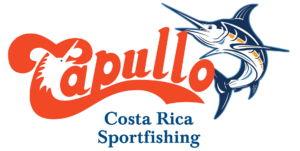The pristine waters of Tamarindo, Costa Rica, are a dream destination for any angling enthusiast. Amidst the azure waves and diverse marine ecosystems, Capullo Sportfishing Charters operates with a deep commitment to sustainable sport fishing practices, ensuring that the region’s beauty and biodiversity are preserved for generations to come.
Understanding Sustainable Fishing
Sustainable sport fishing is more than just a buzzword; it’s a commitment to the marine environment and its myriad species. This practice ensures that certain species are not overfished, habitats are not destroyed, and the ecological balance of the ocean is maintained. By following catch and release practices, using circle hooks to minimize harm, and respecting local regulations, Capullo Sportfishing Charters exemplifies responsible angling in Tamarindo.
Tamarindo’s Marine Ecosystem: A Delicate Balance
The waters off the coast of Tamarindo are home to an array of species, from the majestic Marlin to the playful Dolphin. The health of this ecosystem depends on each species playing its role in the food chain. Overfishing or harmful fishing practices can disrupt this balance, leading to long-term ecological consequences. Capullo’s adherence to sustainable fishing methods ensures that Tamarindo’s marine life thrives.
The Role of Anglers in Conservation
As visitors to this marine paradise, anglers have a unique role to play in conservation. By choosing charters like Capullo that prioritize sustainable practices, they support a fishing culture that respects and cherishes the ocean. Every trip with Capullo becomes not just an adventure but also a step towards preserving the beauty of Tamarindo’s waters.
Sustainable Fishing Practices: A Brief Overview
Sustainable fishing practices are vital for maintaining the balance of marine ecosystems and ensuring that fishing can continue for future generations. At its core, sustainable fishing ensures that fish stocks are not depleted and that the method of fishing does not harm the environment, other marine species, or the communities that rely on fishing.
One primary sustainable fishing method is the use of selective fishing gear, designed to target specific species and sizes. This reduces the chances of unintentional bycatch, where non-target species, including young fish and other marine creatures, are caught. By using selective gear like circle hooks or size-selective nets, fishers can help ensure juvenile fish escape and reproduce, maintaining a healthy population for future harvests.
Another significant practice is the establishment and respect of marine protected areas (MPAs). These are zones where fishing is restricted or prohibited to allow fish populations to grow without human interference. MPAs act as nurseries, ensuring the proliferation of fish stocks and the preservation of fragile habitats.
Catch limits are also a cornerstone of sustainable fishing. Setting and adhering to quotas based on scientific research ensures that only a sustainable number of fish are removed from the population. This helps prevent overfishing and allows fish stocks to replenish.
Additionally, sustainable fishing also considers the socio-economic well-being of local communities. It seeks to provide consistent, long-term employment opportunities and support the livelihoods of those who depend on the sea.
Incorporating these practices is not just beneficial for the environment; it also ensures a steady supply of seafood, supports the global economy, and upholds the cultural significance of fishing in many communities around the world.
In Conclusion
Sport fishing in Tamarindo offers a unique blend of thrill and serenity. With Capullo Charters, anglers can experience this while also being stewards of the ocean. Through sustainable fishing practices, every expedition becomes a testament to the harmonious coexistence of humans and nature.
